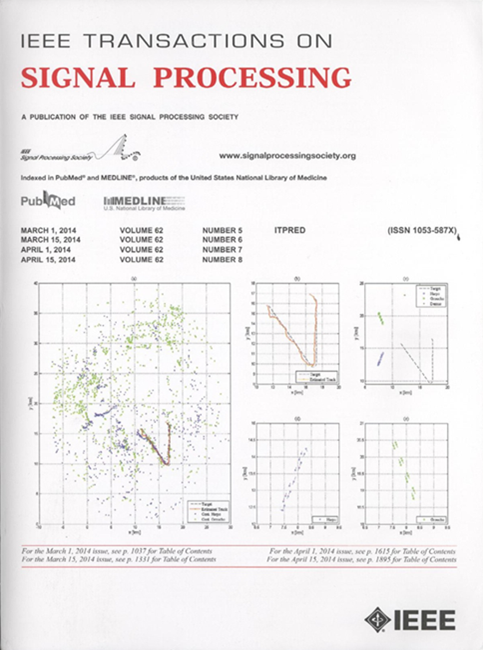A Matrix-Factorization-Error-Ratio Approach to Cooperative Sensing in Non-Ideal Communication Environment
IF 4.6
2区 工程技术
Q1 ENGINEERING, ELECTRICAL & ELECTRONIC
引用次数: 0
Abstract
A fundamental challenge in cognitive radio is the detection of primary users in a licensed spectrum. Cooperative sensing, which utilizes multiple receivers distributed across different locations, offers the advantage of utilizing multiple antennas and achieving spatial diversity gain. However, successful implementation of cooperative sensing relies on the ideal exchange of information among cooperating receivers, which may not always be feasible in real-world scenarios. In this paper, we consider the cooperative sensing problem in a non-ideal communication scenario, where the raw data broadcasted from a receiving node can be received by only a subset of the nearby nodes. Existing multiantenna detectors can not deal with such a scenario. To tackle this issue, we propose a novel cooperative sensing scheme, where each node sends only its local correlation coefficients to the fusion center. A detection mechanism based on factorizing the partially received sample covariance matrix is developed. To achieve fast convergence and avoid exhaustive step size tuning, a Bregman proximal method, based on an alternating minimization algorithm (with convergence guarantees), is also developed. The advantages of our proposed cooperative scheme is demonstrated through numerical simulations.非理想通信环境中的矩阵因子化-误差率合作传感方法
认知无线电的一个基本挑战是如何在许可频谱中检测主要用户。合作传感利用分布在不同地点的多个接收器,具有利用多天线和实现空间分集增益的优势。然而,合作传感的成功实施有赖于合作接收器之间理想的信息交换,而这在现实世界中并不总是可行的。在本文中,我们考虑了非理想通信场景下的合作传感问题,即接收节点广播的原始数据只能被附近节点的一个子集接收。现有的多天线探测器无法应对这种情况。为了解决这个问题,我们提出了一种新型合作传感方案,即每个节点只向融合中心发送其本地相关系数。我们开发了一种基于对部分接收到的样本协方差矩阵进行因式分解的检测机制。为了实现快速收敛和避免步长调整,还开发了一种基于交替最小化算法(具有收敛保证)的布雷格曼近似方法。我们提出的合作方案通过数值模拟证明了其优势。
本文章由计算机程序翻译,如有差异,请以英文原文为准。
求助全文
约1分钟内获得全文
求助全文
来源期刊

IEEE Transactions on Signal Processing
工程技术-工程:电子与电气
CiteScore
11.20
自引率
9.30%
发文量
310
审稿时长
3.0 months
期刊介绍:
The IEEE Transactions on Signal Processing covers novel theory, algorithms, performance analyses and applications of techniques for the processing, understanding, learning, retrieval, mining, and extraction of information from signals. The term “signal” includes, among others, audio, video, speech, image, communication, geophysical, sonar, radar, medical and musical signals. Examples of topics of interest include, but are not limited to, information processing and the theory and application of filtering, coding, transmitting, estimating, detecting, analyzing, recognizing, synthesizing, recording, and reproducing signals.
 求助内容:
求助内容: 应助结果提醒方式:
应助结果提醒方式:


